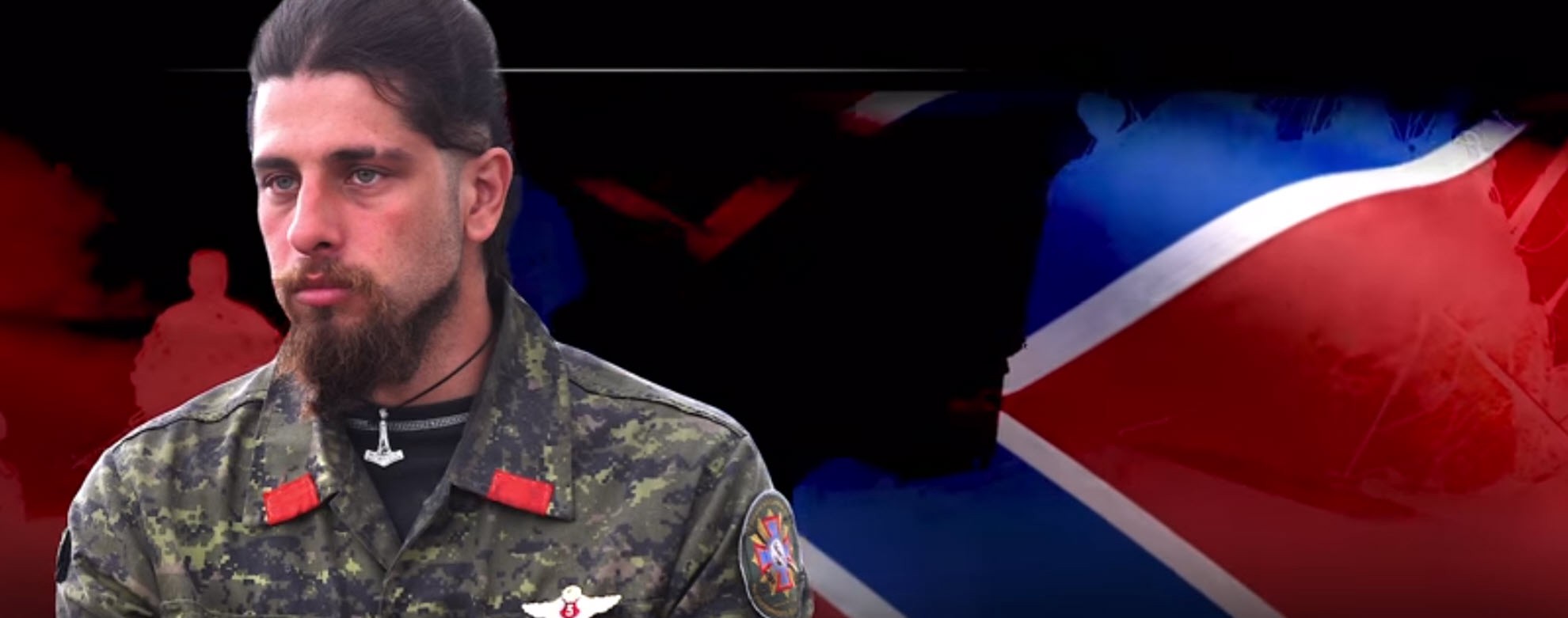#MinskMonitor: From Brazilian Separatist to Orthodox Monk
The strange journey of the “separatist” volunteer who now lives in Kyiv monastery
#MinskMonitor: From Brazilian Separatist to Orthodox Monk

The strange journey of the “separatist” volunteer who now lives in Kyiv monastery

Radio Free Europe/Radio Liberty’s Christopher Miller published a story last week with elements that seem more well-fitted for a 19th century picaresque novel rather than real life. In his new piece, Miller documented how the 33-year-old Brazilian Rafael Lusvarghi went from a volunteer fighter in the so-called separatist “republics” to a monk-in-training at a Kyiv monastery.
As Miller described, Lusvarghi was arrested in 2016 after the Ukrainian Security Service (SBU) tricked him into returning to Ukraine with a “false job offer,” and he was convicted in Ukraine for participating in fighting and recruiting others in January 2017. He was mysteriously released in December 2017, but he was “stuck” in Ukraine because his passport was still with Ukrainian officials. As he awaits his fate, Lusvarghi has become a monk-in-training at Kyiv’s Svyato-Pokrovskyy Holosiivskyy Monastery, though he told Miller that he misses his family back in Brazil.
How did the Brazilian get to where he is, and what open source evidence is out there of his activities that led to his arrest and conviction in Ukraine?
Darling of Russian propaganda
Russian state media was among the Russian or pro-Russian outlets that covered Lusvarghi’s activities with the so-called “republics” of the Donbas, framing him as a noble activist who came to help protect Russians in eastern Ukraine. In a December 2014 report on Russia’s most popular news program, Vesti, Lusvarghi gives an interview as the program portrays him as someone concerned with human rights and corruption.
For example, Vesti showed photographs of Lusvarghi in a military uniform, and showed him during protests in Brazil, where he was pepper sprayed by riot police.


We can verify that this photograph does indeed show the future separatist fighter, as the Brazilian news outlet Globo published photographs from June 12, 2014, which showed a “Rafael Marques Lusvarghi” being pepper sprayed in Sao Paulo.

Miller’s recent RFE/RL report described how the Brazilian first arrived in Ukraine on September 20, 2014. This information was corroborated by the December 2014 Vesti report, which detailed how Lusvarghi has been fighting with the “Cossacks” of the so-called Luhansk People’s Republic (LNR) for “three months,” and he started to train with the international group of the “Prizrak” Brigade in October 2014. He appeared alongside the infamous Cossack fighter Aleksandr “Babai” Mozhayev during the interview, which was filmed outside of the Ukrainian town of Pervomaysk.

Over the next year, Lusvarghi became one of the most visible foreign volunteers in the ranks of the so-called separatist “republics,” with attention in Ukraine, Russia, and back home in Brazil.

With a strong command of the Russian language and an interesting backstory, Lusvarghi was interviewed and profiled by a number of separatist media channels, including “Pravda DNR” in May 2015.
https://www.youtube.com/watch?v=8_yCWxW3pA8
Lusvarghi was also profiled as part of the “Soldiers of Freedom” series in the summer of 2015.
https://www.youtube.com/watch?v=a7KL15Hlc90
The attention that Lusvarghi received was not limited to just media outlets with fawning profiles — he also received a medal from infamous former “Donetsk People’s Republic” Minister of Defense Igor “Strelkov” Girkin.

Conclusion
Over the past four years, there have been a few arrests of foreign fighters who joined the so-called separatists in eastern Ukraine. Some of these include eight Spaniards arrested in Spain who fought for the Donetsk and Luhansk “People’s Republics” (2015), and a Moldovan arrested in Chisinau after fighting with the “Bryanka SSR” military unit in the Luhansk region (2015).
The case of Lusvarghi differs in that Ukraine was able to lure the Brazilian back to Ukrainian soil to make an arrest, making him the “first non-Russian convicted for crimes related to the war,” per Miller’s RFE/RL report.
However, Ukraine’s sudden release of the Brazilian fighter is just as mysterious as his decision to become a man of God in an Orthodox monastery. With future arrests of foreign fighters, it is unclear how aggressive Ukraine’s prosecutors will be.
Follow the latest Minsk II Violations via the @DFRLab’s #MinskMonitor.
For more in-depth analysis from our regional experts follow the Atlantic Council’s Dinu Patriciu Eurasia Center. Or subscribe to UkraineAlert.

